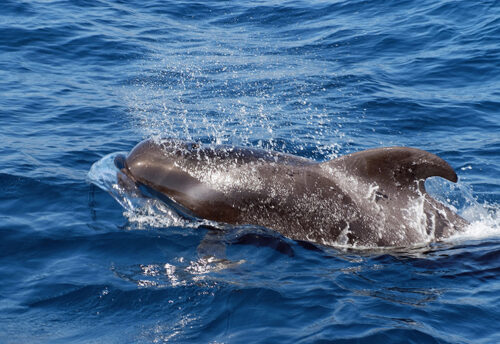
There are 14 known species of tree kangaroo that are found in Australia, Papua New Guinea, and Indonesia. Tree kangaroos live in lowland rainforests and cloud forests at around 11,000 feet. Deforestation and illegal hunting are the main causes for their Endangered status with IUCN. Due to the nearly 90% habitat loss tree kangaroo populations have plummeted by nearly 80%!
First the Stats…
Scientific name: Dendrolagus
Weight: Up to 32 lbs.
Height: Up to 30 inches, plus their up to 34 inch tail
Lifespan: Up to 20+ years
Now on to the Facts!
1.) They spend most of their lives in trees making them arboreal.
2.) These critters will typically lick their forearms to aid in cooling themselves on hot days.
3.) While skilled at climbing trees, these kangaroos aren’t as skilled at moving around (as other roos do) while on the ground.
4.) These roos are diurnal (active during the day).
5.) Tree kangaroos eat leaves, shoots, flowers, bark, eggs, and even the occasional small bird.
But wait, there’s more on the tree kangaroo!
6.) Pythons and wild dogs are the main predators of these kangaroos.
7.) The tree kangaroo is solitary and territorial. They patrol a large area that overlaps with nearby female territories.
Did you know…?
Tree kangaroos can jump distances of up to 30 feet between the trees and also safely land on the ground from a height of up to 60 feet!
8.) Tree kangaroos mate during monsoon season. Talk about a stormy relationship. Males mate with couple of females each season, but do not have harems.
9.) Pregnancy lasts 40 – 45 days and results in a single baby, called a joey, that is underdeveloped and crawls into their mother’s marsupium (pouch) to continue to grow.
10.) At around 8 months the joey leaves the pouch to begin exploring, but will return to their mother’s pouch for rest and to feed on milk. At around 10 months the joey is developed enough to leave their mother and begin leading a solitary life.
Now a Short Tree Kangaroo Video!
Also, check out the Critter Science YouTube channel. Videos added frequently!
Want to suggest a critter for me to write about? Let me know here.




Leave a Reply